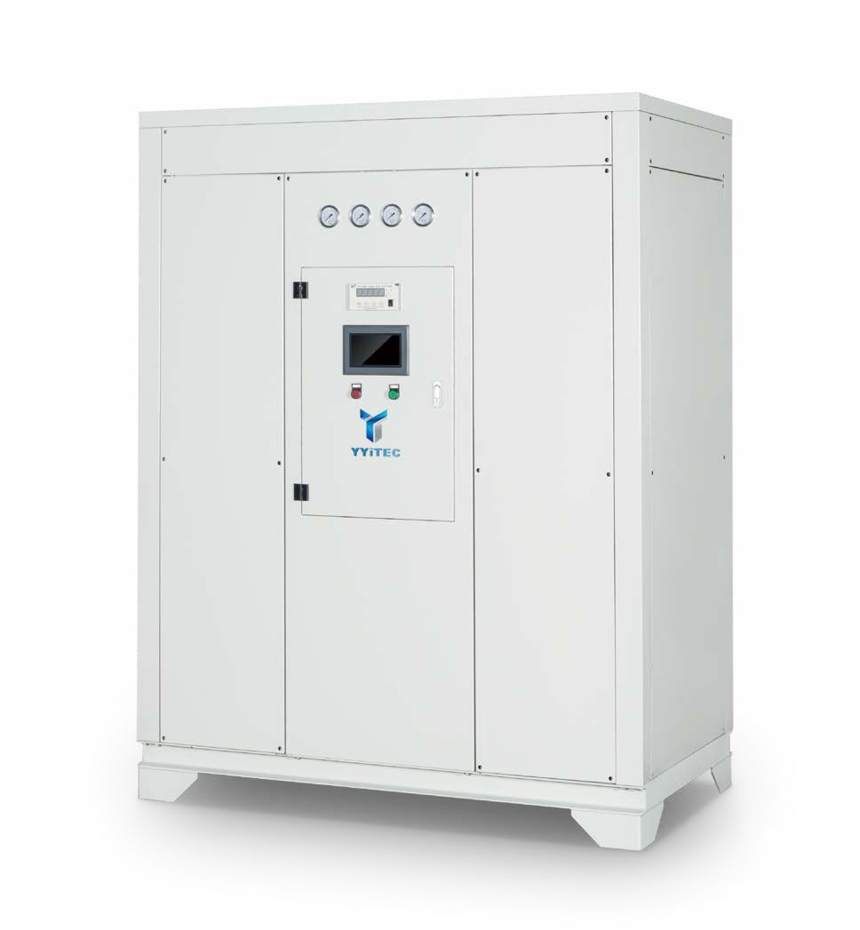
Release time: 2023-06-12
Pressure Swing Adsorption Nitrogen Generator (PSA Nitrogen Generator for short) is a nitrogen generating equipment designed and manufactured based on pressure swing adsorption technology. It uses air as the material and high-quality carbon molecular sieves as the adsorbent. It uses the principle of pressure swing adsorption (PSA) and uses molecular sieves full of micropores to selectively adsorb air to achieve the purpose of oxygen and nitrogen separation. In the research and development process of the nitrogen generator , Shanghai Lingquan Industrial Development Co., Ltd. used advanced mold technology and its performance is very stable.
Its function is to use air as a material and use physical methods to separate the oxygen and nitrogen in it to obtain it.
There are three types in industry, namely cryogenic air separation , molecular sieve air separation (PSA) and membrane air separation .
Working principle
PSA pressure swing adsorption nitrogen generator principle Carbon molecular sieve can adsorb oxygen and nitrogen in the air at the same time, and its adsorption capacity also increases with the increase of pressure, and there is
no significant difference in the equilibrium adsorption capacity of oxygen and nitrogen under the same pressure. Therefore , it is difficult to achieve effective separation of oxygen and nitrogen solely by changes in pressure. If the adsorption speed is further considered, the adsorption characteristics of oxygen and nitrogen can be effectively distinguished. The diameter of oxygen molecules is smaller than that of nitrogen molecules, so the relaxation rate is hundreds of times faster than that of nitrogen . Therefore, the carbon molecular sieve adsorbs oxygen very quickly, and the adsorption reaches more than 90% in about 1 minute; at this time, the adsorption capacity of nitrogen is only 5%. Or so, so what is adsorbed at this time is mostly oxygen, and the rest is mostly nitrogen. In this way, if the adsorption time is controlled within 1 minute, oxygen and nitrogen can begin to be separated. That is to say,adsorption and desorption are accomplished by pressure difference. When the pressure increases, adsorption occurs and when the pressure decreases, desorption occurs. The difference between oxygen and nitrogen is determined by the difference in the adsorption speed of the two , which is achieved by controlling the adsorption time. By controlling the time to be very short, oxygen has been fully adsorbed, but nitrogen has not yet had time to adsorb, and the adsorption process continues.
Therefore, pressure swing adsorption nitrogen production requires pressure changes and the time must be controlled within 1 minute.
Principle of cryogenic air separation nitrogen production Cryogenic nitrogen production can not only produce nitrogen but also liquid nitrogen, which meets the process requirements that require liquid nitrogen, and can be stored
in a liquid nitrogen storage tank. When there is a continuous load of nitrogen or the air separation equipment is repaired, the liquid nitrogen in the storage tank will After entering the vaporizer and being heated, the product nitrogen pipeline is fed to meet the nitrogen demand of the process equipment. The operating cycle of cryogenic nitrogen production (referring to the interval between two major heating periods) is generally more than one year. Therefore, cryogenic nitrogen production is generally not considered for backup. However, pressure swing adsorption nitrogen production can only produce nitrogen and has no backup method. A single set of equipment cannot ensure continuous long-term operation.
membrane air separation nitrogen generator The air enters the polymer membrane filter after being compressed and filtered by the compressor. Due to the different solubility and relaxation coefficients of various gases in the membrane, the relative permeability rates of different gases in the membrane are different . According to this characteristic, various gases can be divided into "fast gas" and "slow gas".
are enriched on the permeation side of the membrane after passing through the membrane, and the permeation rate is relatively low . Slow gases, such as methane, nitrogen, carbon monoxide and argon, are retained on the side of the membrane and enriched , thereby achieving the purpose of separation of the mixed gases.

COPYRIGHT© Foshan tiandiyuanyi purification equipment co.,LTD Copyright 粤ICP备10221385 技术支持:思域科技